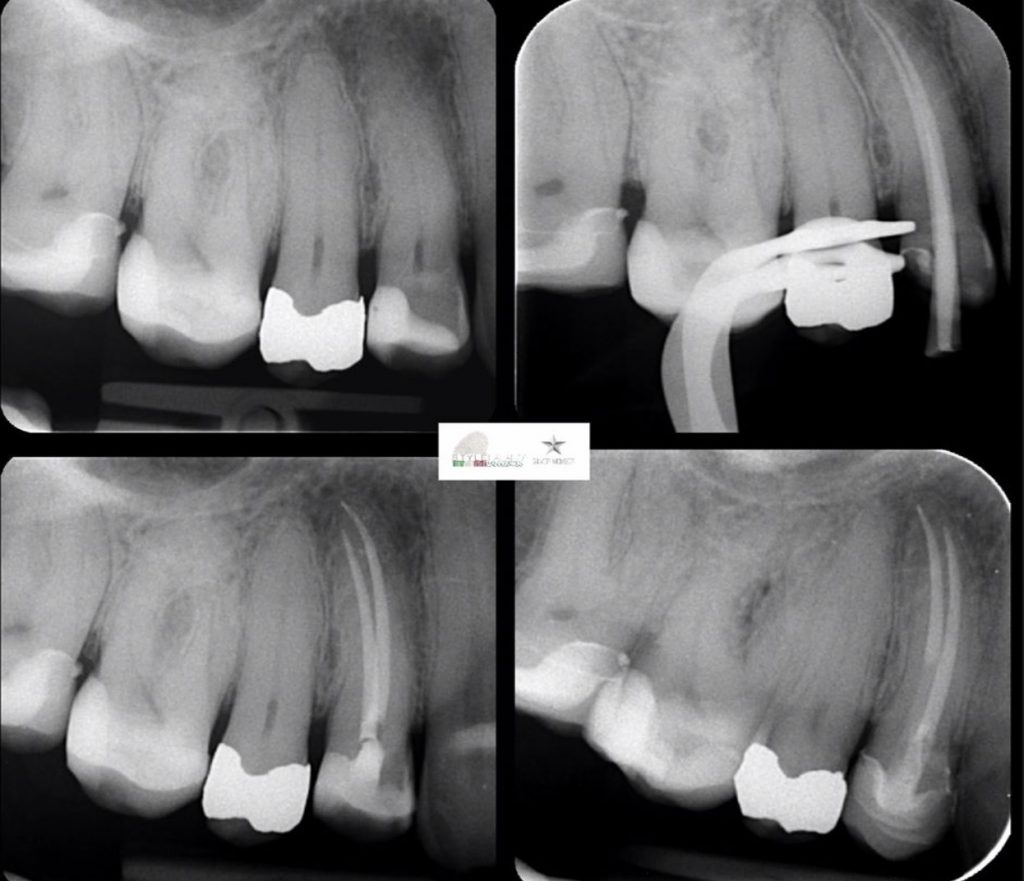
Endo-resto treatment of upper right first premolar.
26/04/2020
Fitim Shabani
Warning: Undefined variable $post in /var/www/vhosts/styleitaliano-endodontics.org/endodontics.styleitaliano.org/wp-content/plugins/oxygen/component-framework/components/classes/code-block.class.php(133) : eval()'d code on line 2
Warning: Attempt to read property "ID" on null in /var/www/vhosts/styleitaliano-endodontics.org/endodontics.styleitaliano.org/wp-content/plugins/oxygen/component-framework/components/classes/code-block.class.php(133) : eval()'d code on line 2
The coronary seal is just as important as the apical seal.
Endodontic treatments will have good prognosis and their long life will be ensured, if we have completed treatment not only of the endodontic system but also of the restorations part.
We are witnesses ourselves, but there are also have many studies that proves that most endodontic failures come from mismanagement in the restorative phase.
Therefore the treatment plan and preliminary evaluation are crucial. Before making any endodontic treatment we must always answer to the question: “Is the tooth restorable or not?”
In this case report I will try to describe an endodontic treatment along the restorations phase.
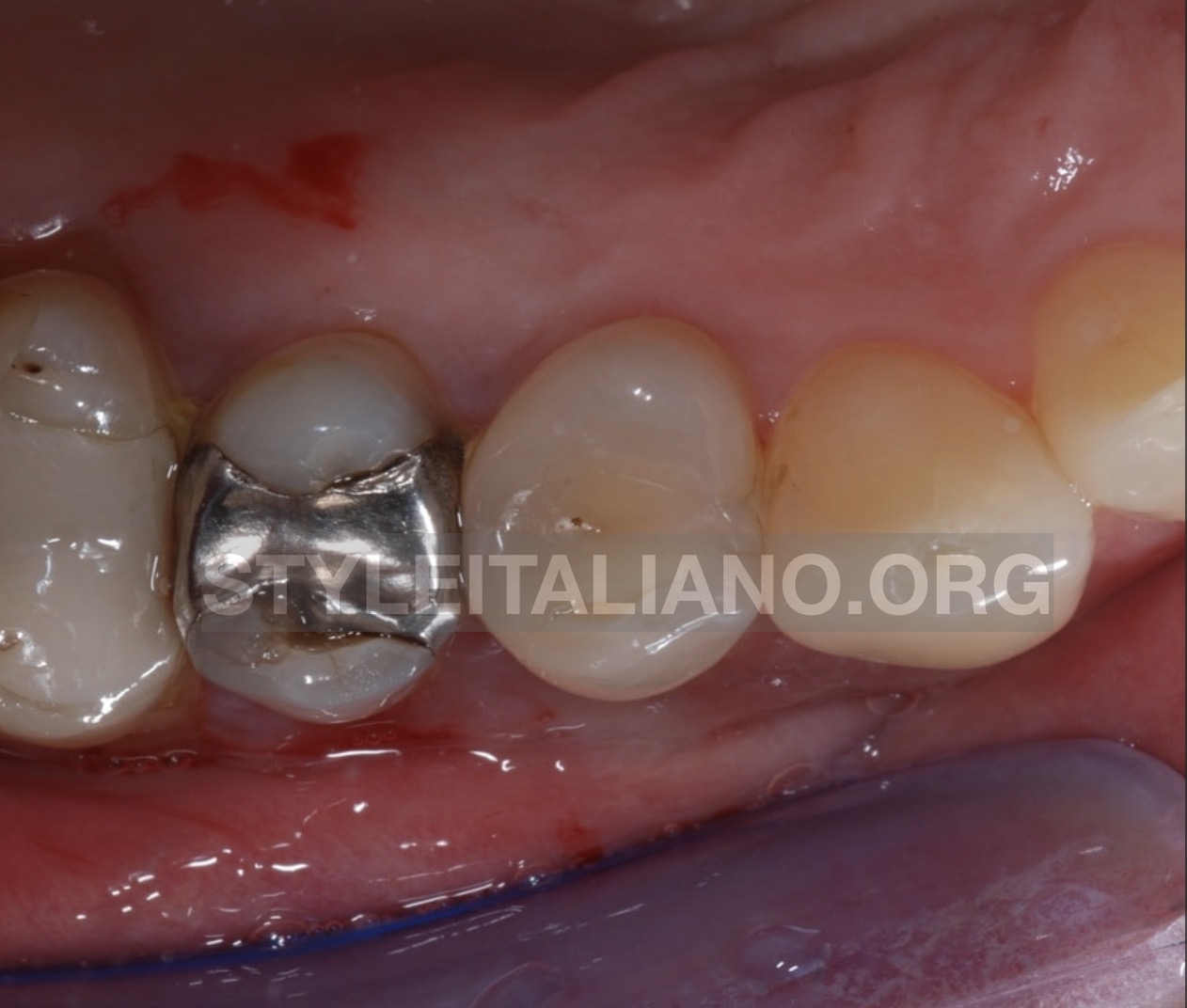
Fig. 1
Clinical data
Male patient, 40 years old came to our clinic with the bite pain complaint on tooth 14. The tooth had a composite filling OD.
- Vitality of cold and hot was negative
- Percussion was positive
- Good oral hygiene
- On the preoperative X-ray we saw a clear presence of pathology in the apical part of the root on the tooth 14.
Diagnosis suspected : parodontitis apicalis symptomatic
Treatment plan and evaluation : Root canal treatment
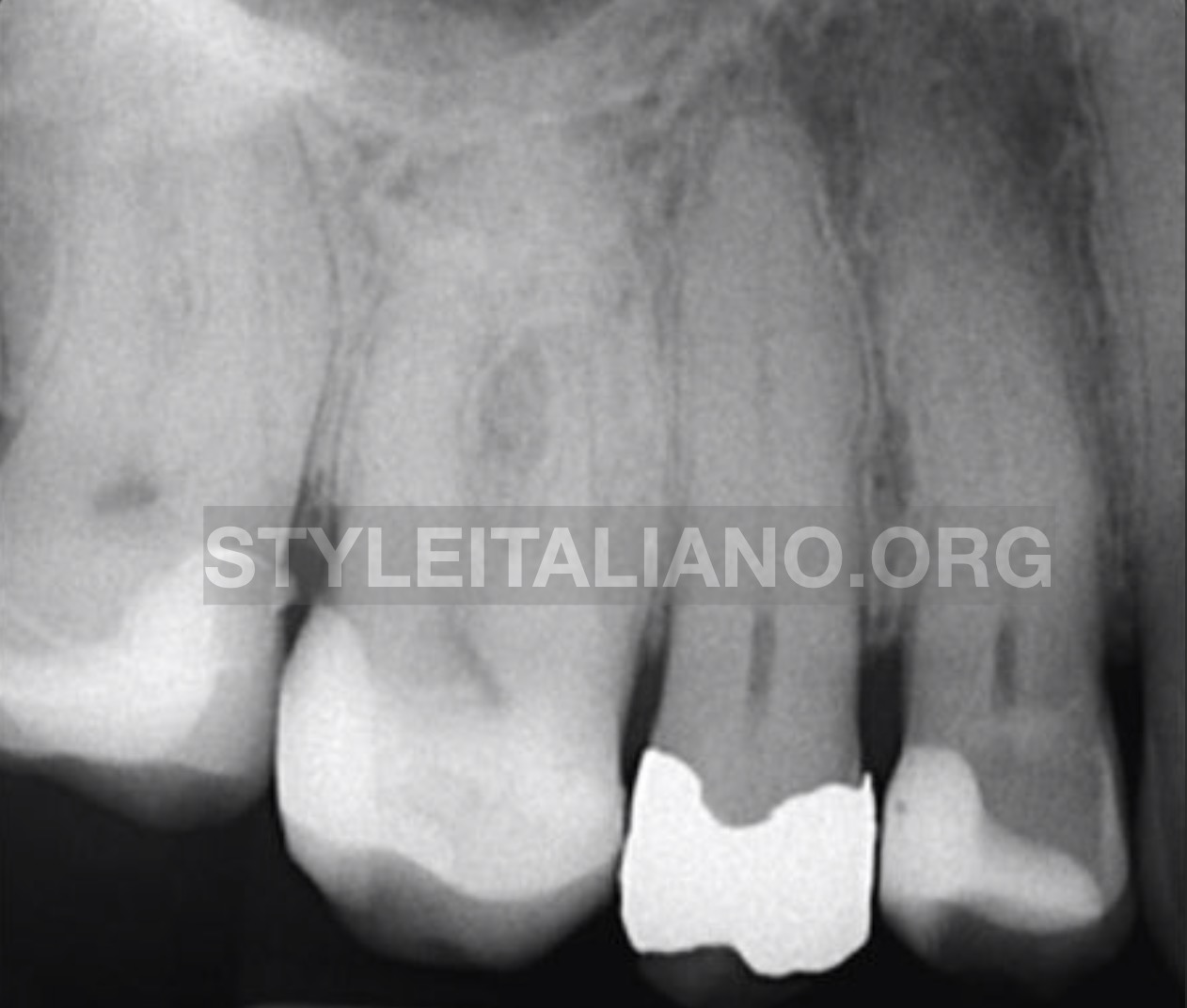
Fig. 2
RX view
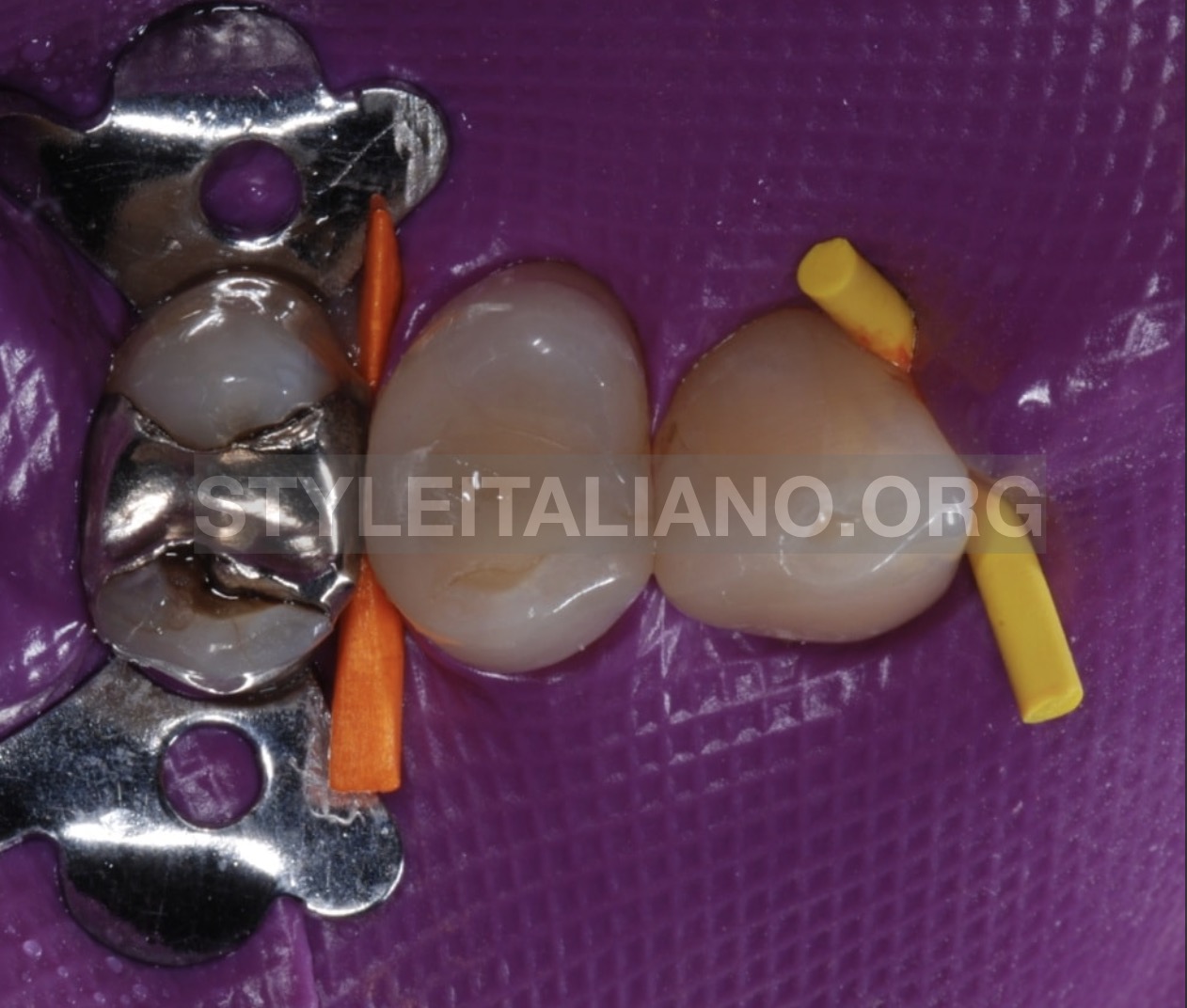
Fig. 3
The first step in endodontic treatments after anesthesia is to isolate the operative field.
In cases where there is an aproximal filling then it is preferable to make multipletooth isolation and put a wood wedge to protect the ruberdam in that space.
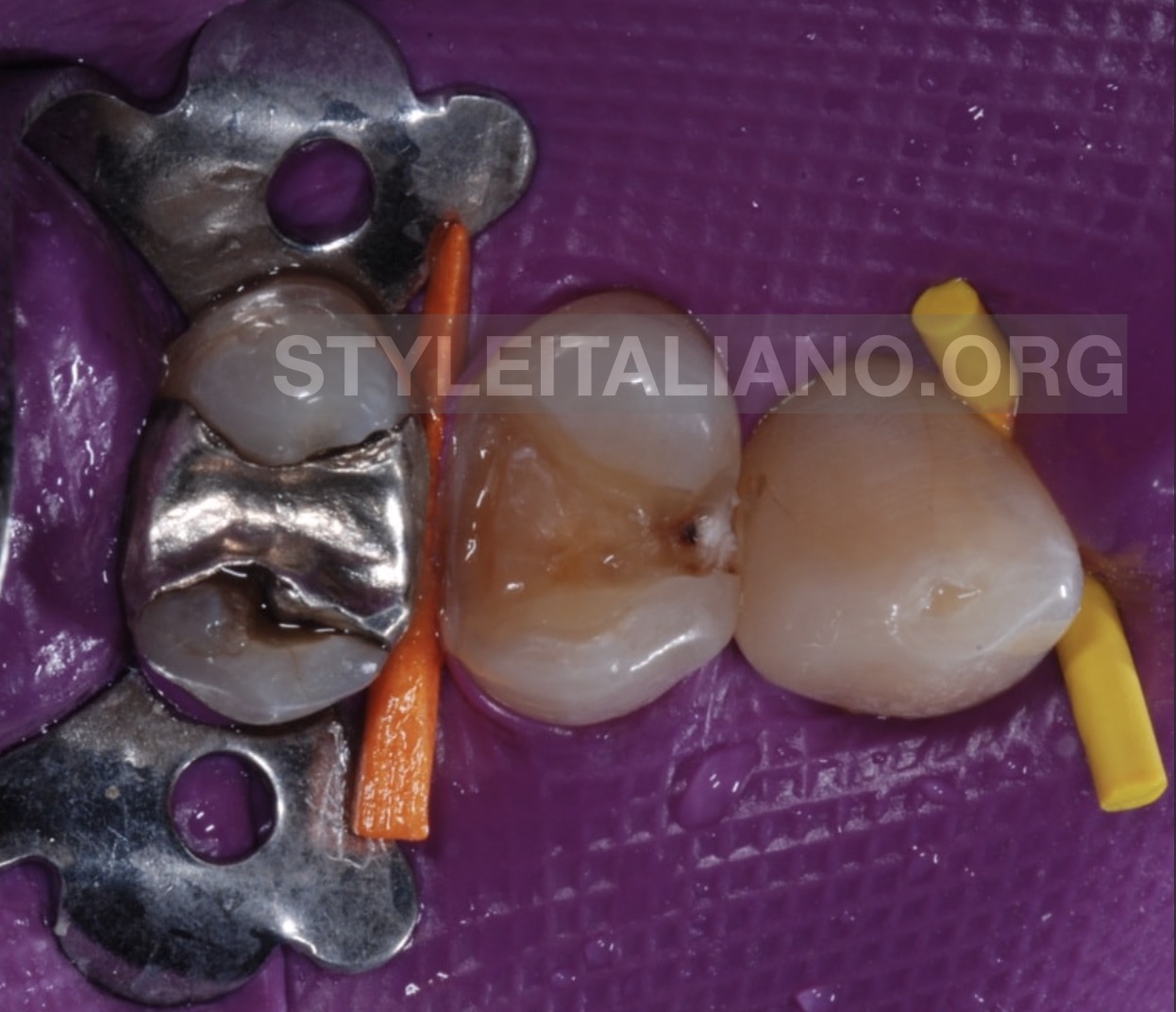
Fig. 4
Initial preparation
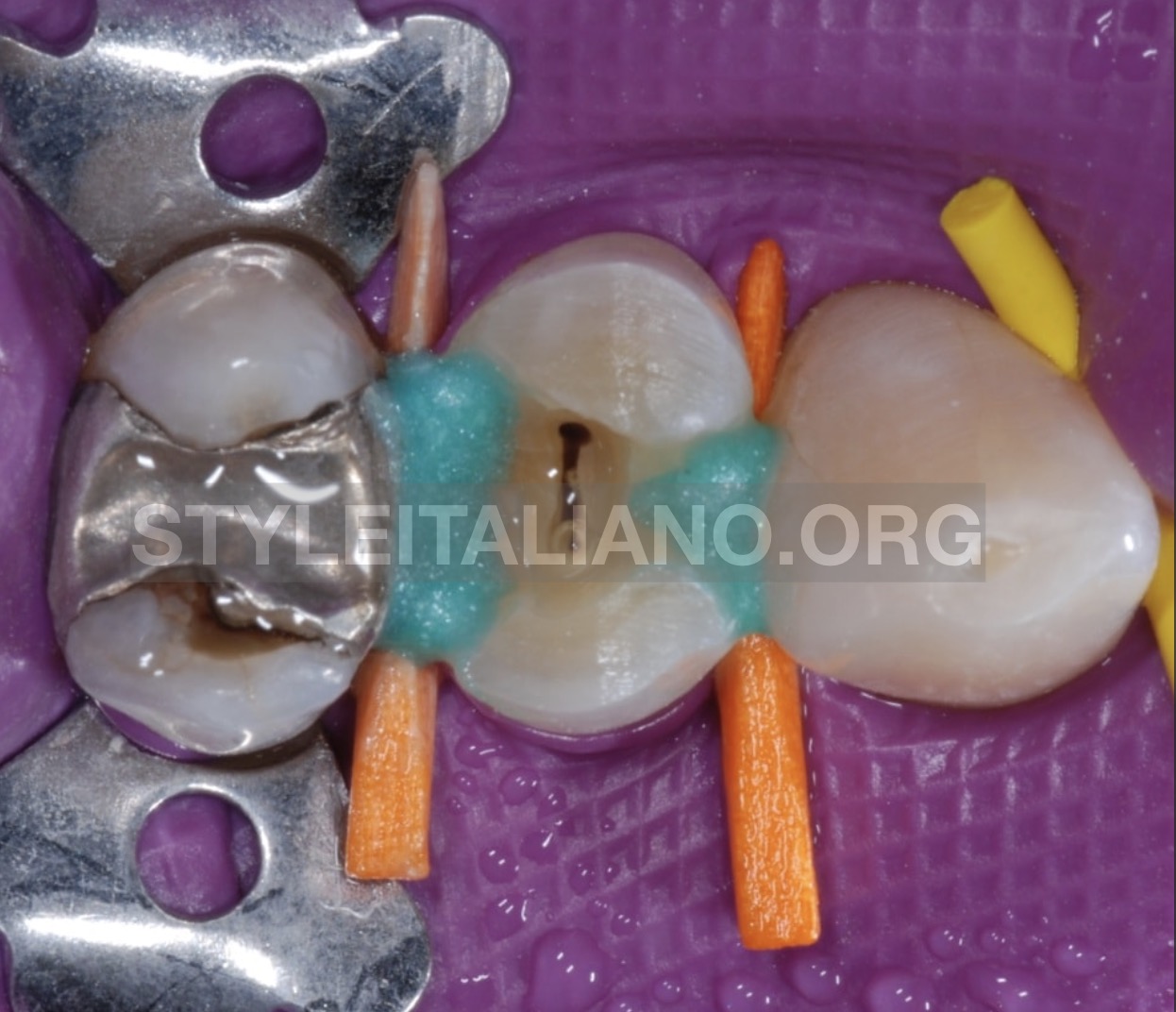
Fig. 5
To save our time: instead of preendo build up, we can use liquid dam as an aproximal barrier during endodontic treatments.
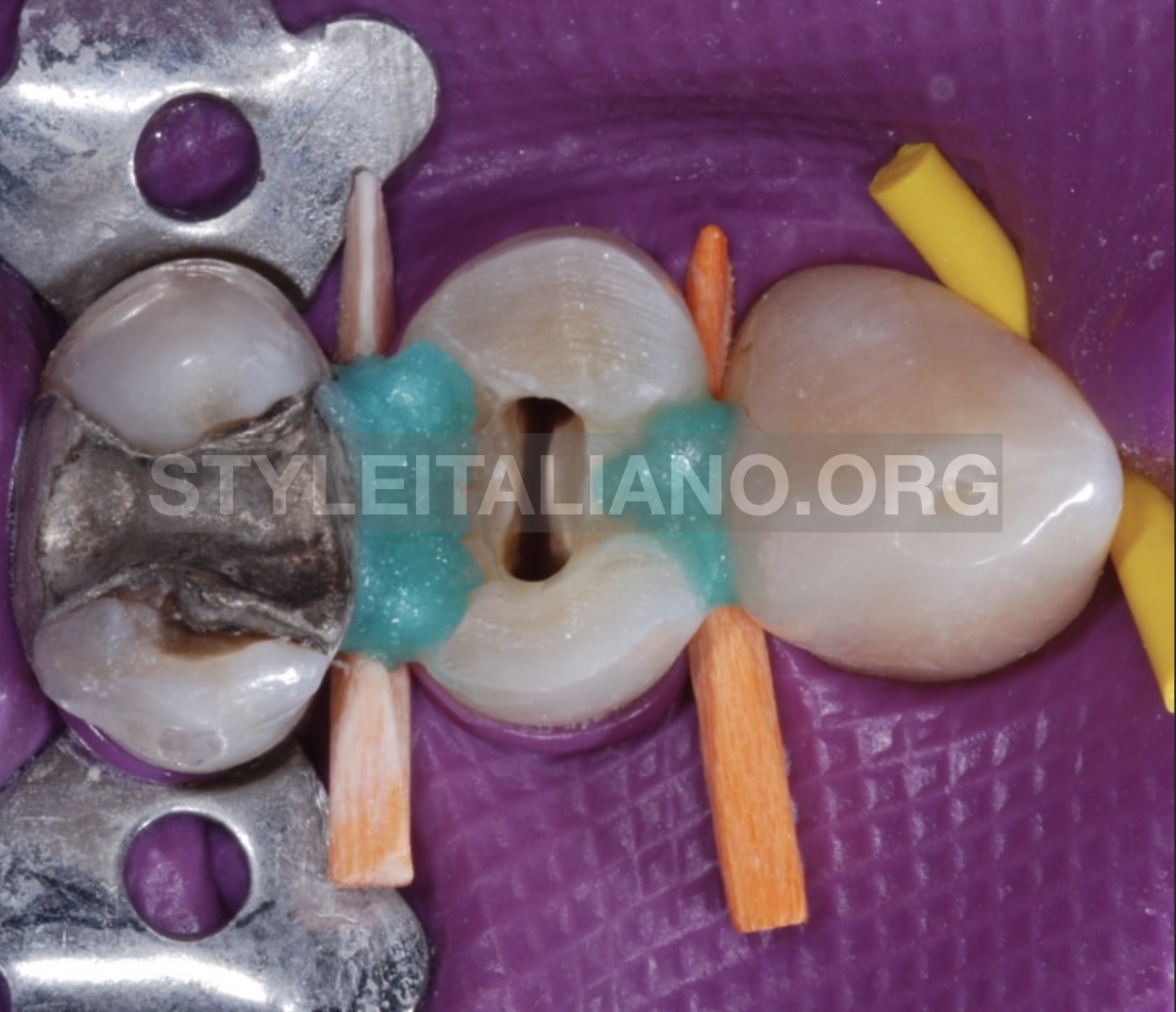
Fig. 6
Let`s not forget that we treat endodontic spaces and not just onla the cannals.
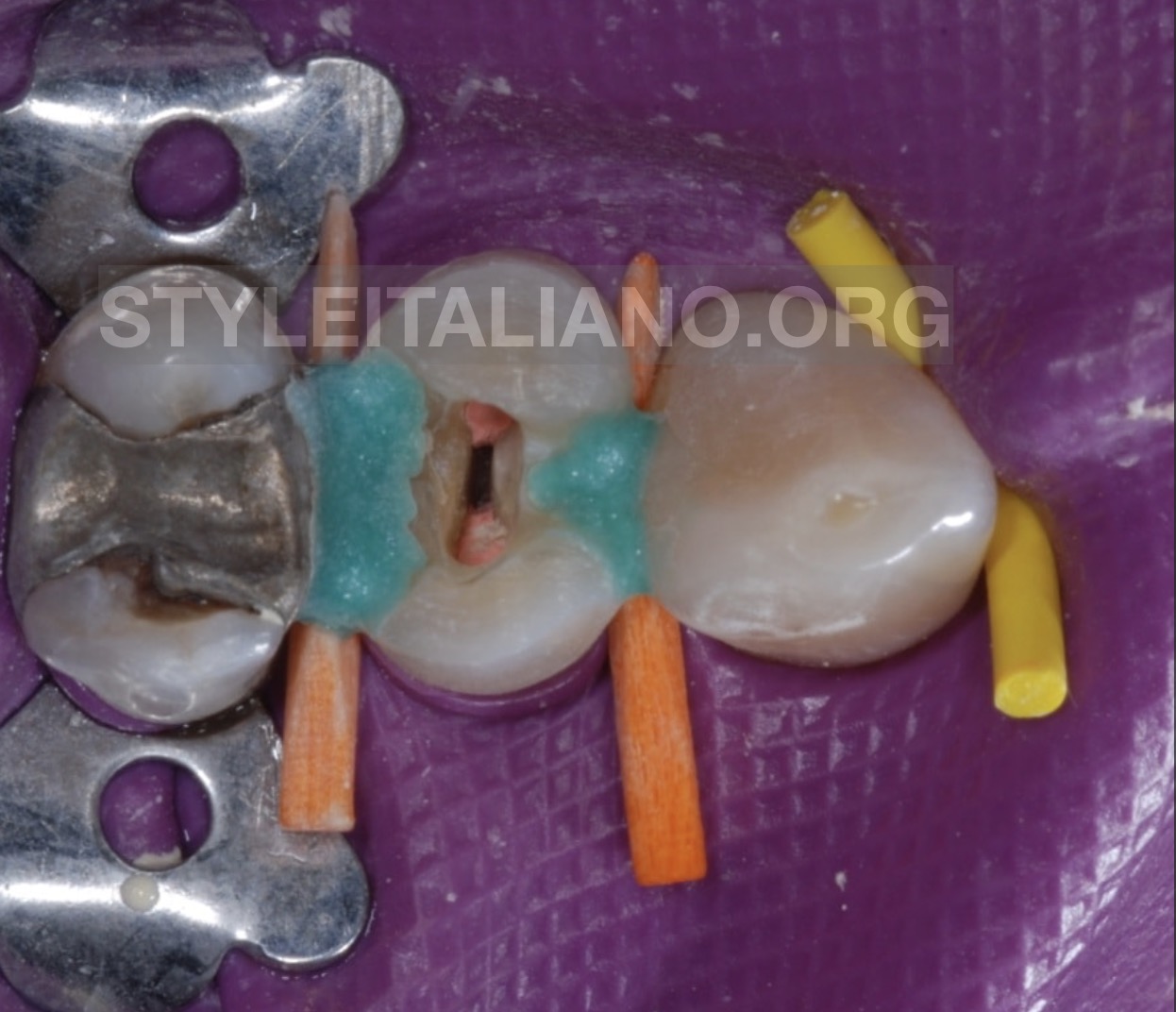
Fig. 7
Warm vertical compaction
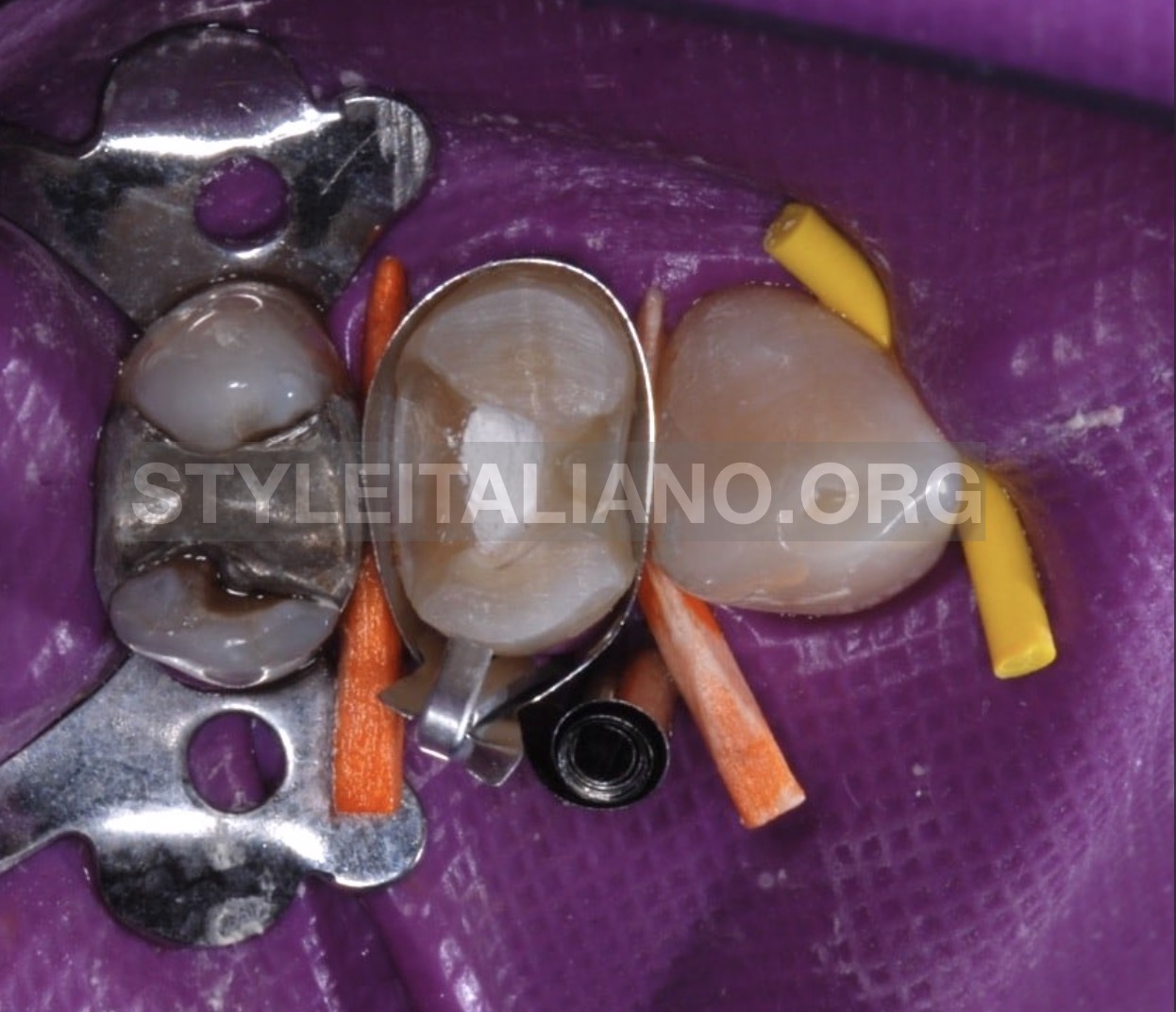
Fig. 8
Automatrix
Provisional filling in the endodontic cavity ( Cavit ) and then GIZ (glasionomercement)
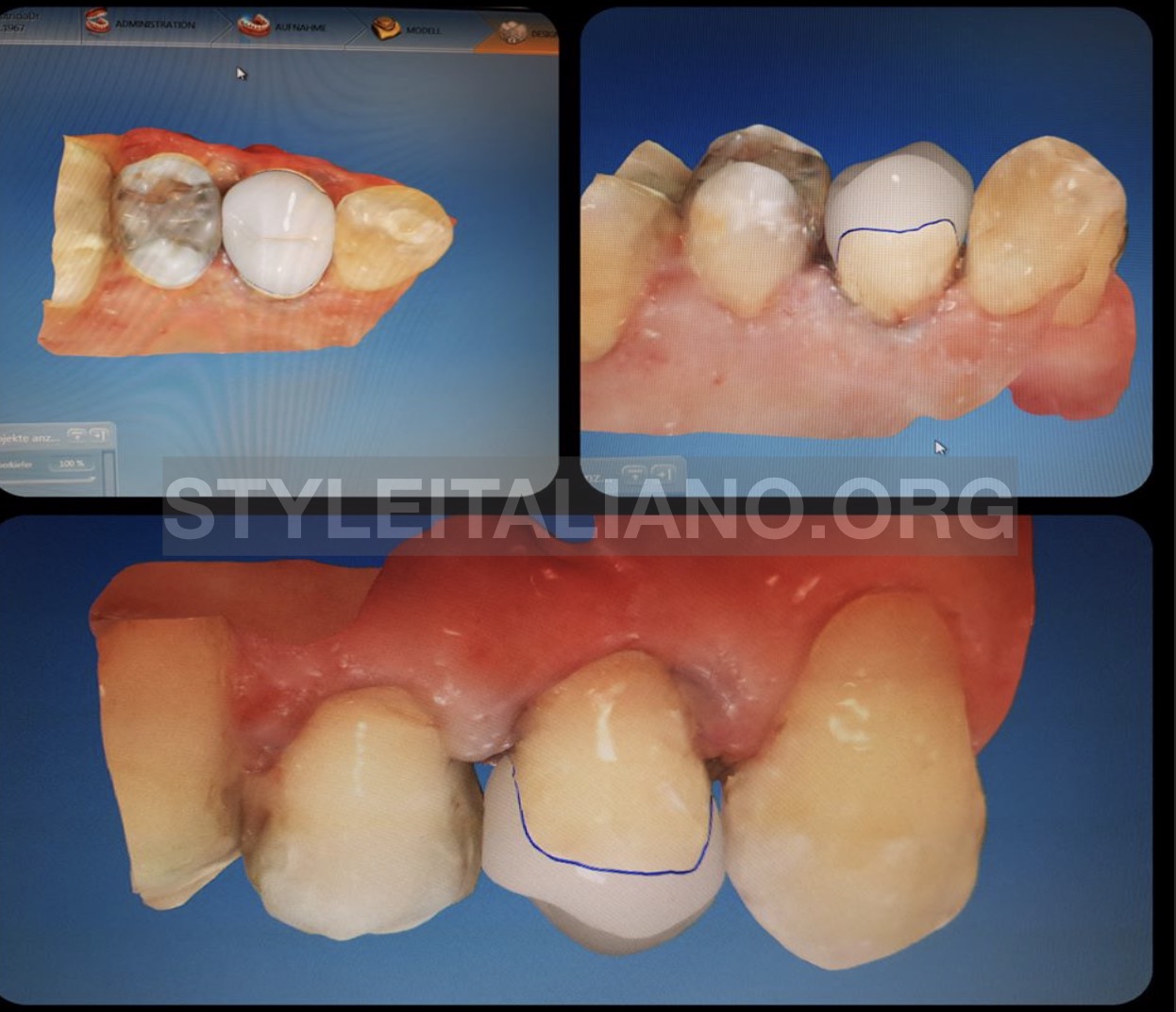
Fig. 9
Design of the crown
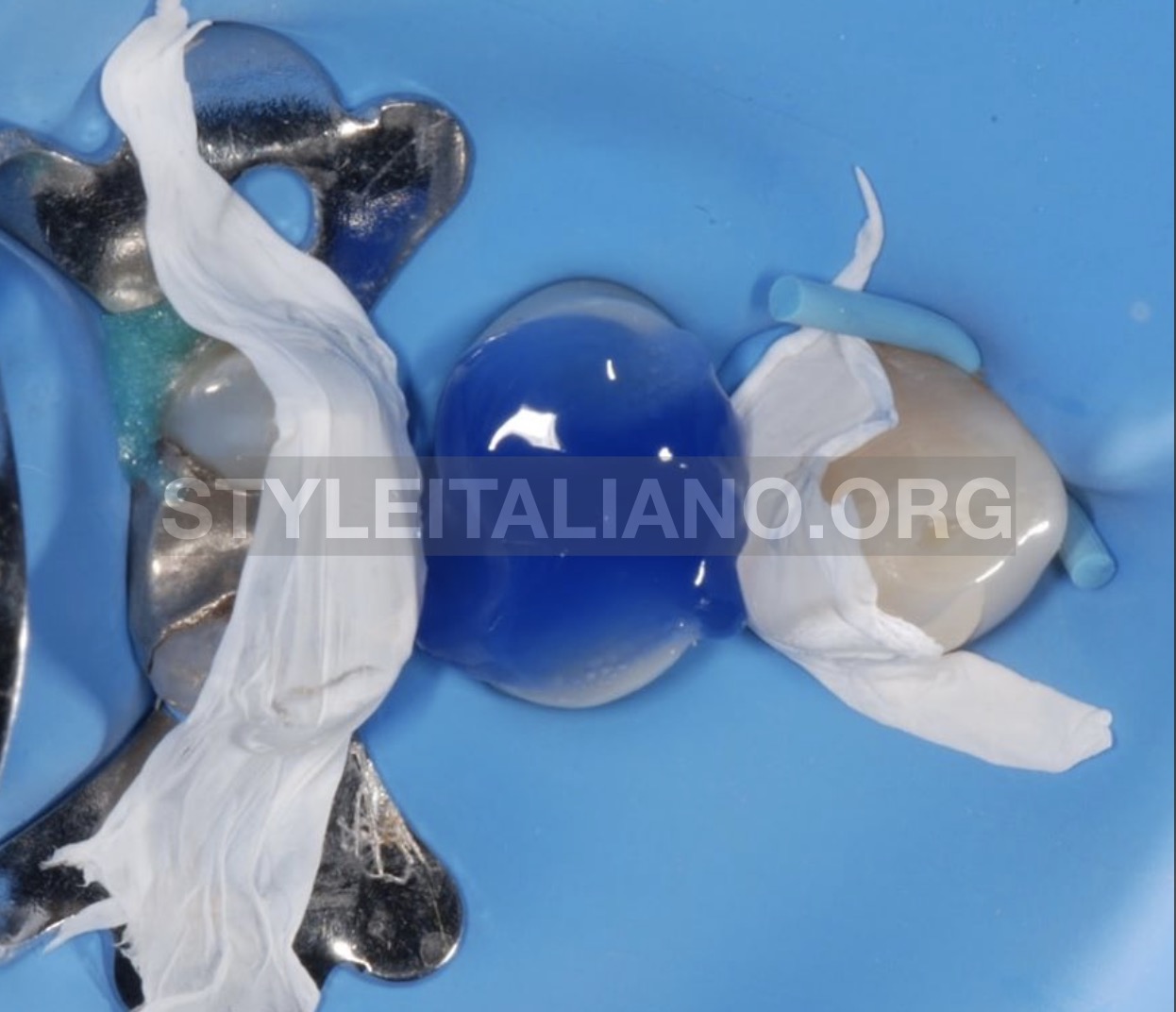
Fig. 10
The restorative phase: etching
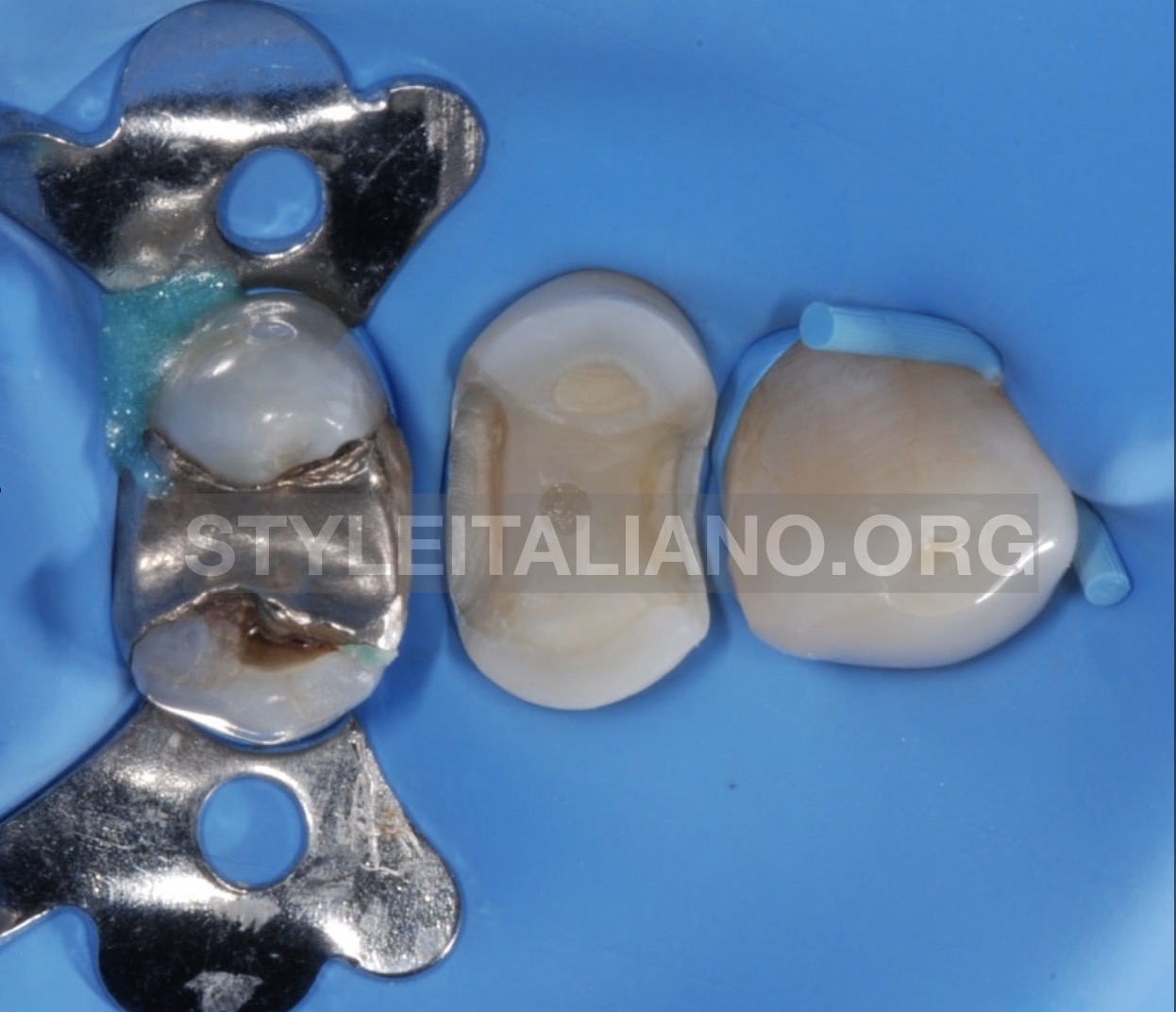
Fig. 11
Preserve the enamel as much as possible for a better adhesion
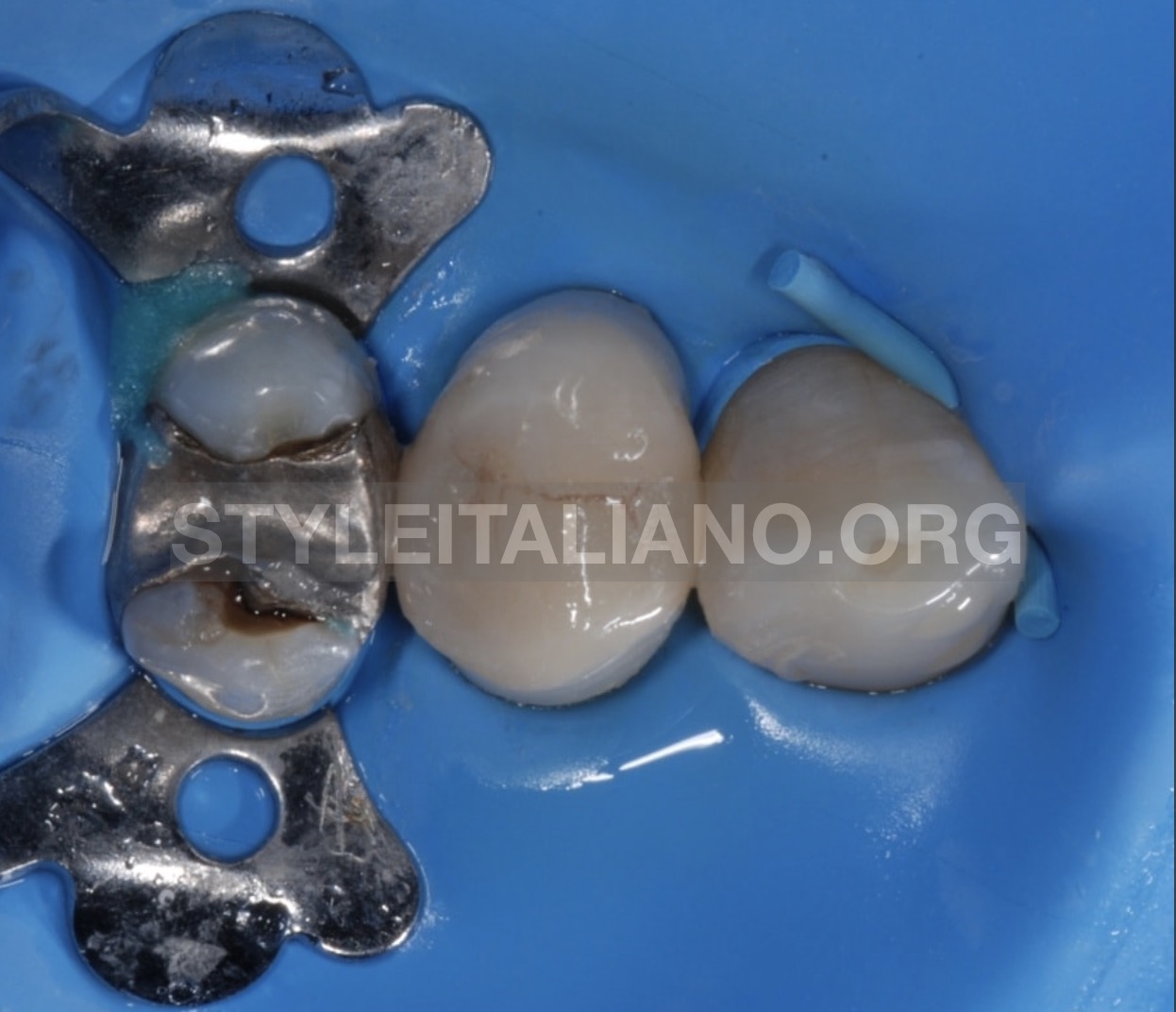
Fig. 12
Crown cementation
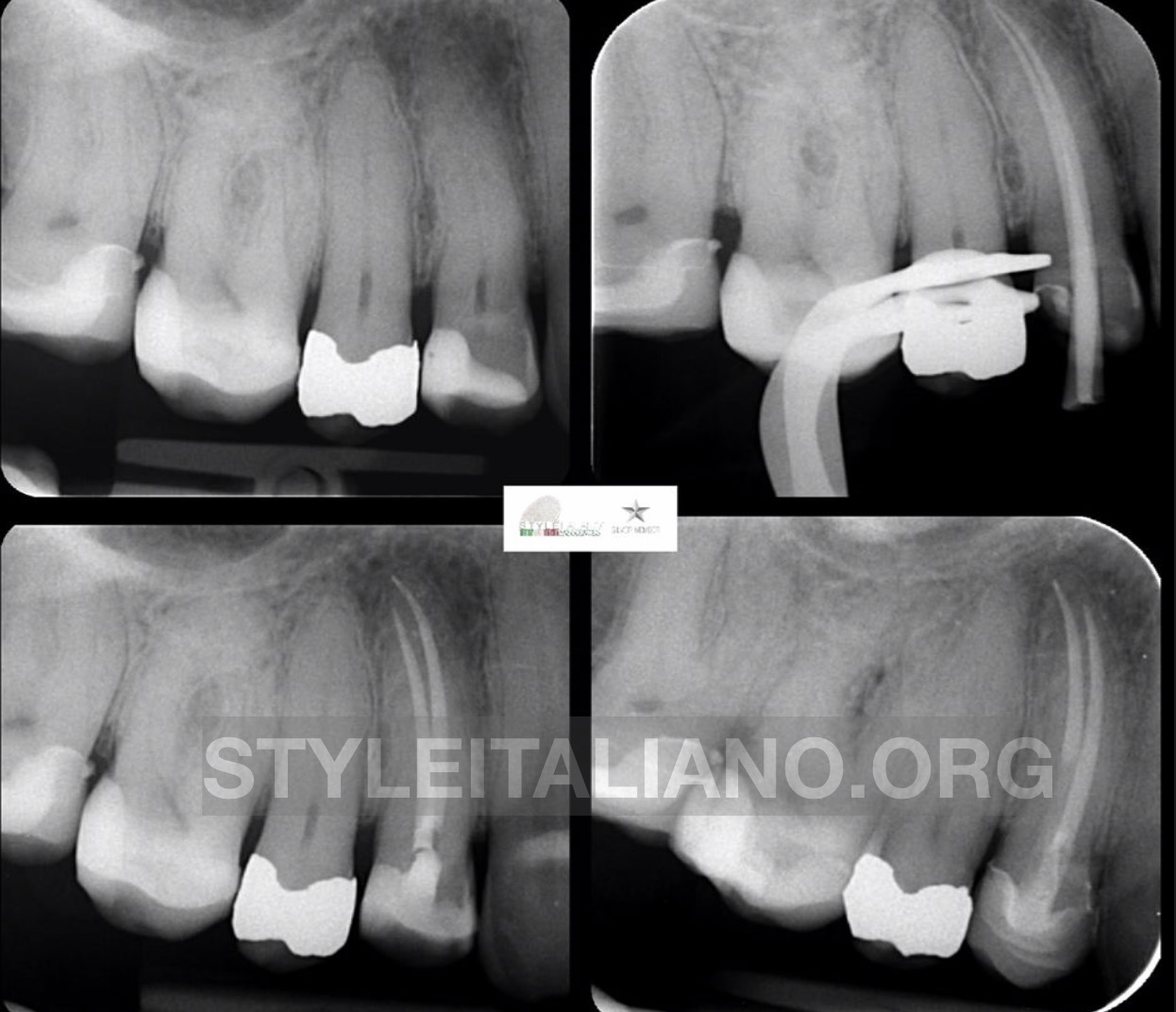
Fig. 13
Pre-intra-post operative X-rays
Conclusions
The concept of minimally invasive dentistry in these treatments is essential and crucial.
Exploring the anatomy of a tooth does not mean to loose tooth structure.
Therefore a proper endodontic endo access cavity allows the exploration and cleaning of the endodontic spaces. Where at the same time we maintain a healthy tooth structure which is important for the restorative phase.
Bibliography
Endodontics ( Volume 1 Diagnosis in Endodontics, Arnaldo Castelluci
Post Placement and Restoration of Endodontically Treated Teeth: A Literature Review Richard S.Schwartz,James W.Robbins
The Effects of Endodontic Access Cavity Preparation Design on the Fracture Strength of Endodontically Treated Teeth: Traditional Versus Conservative Preparation Taha Özyürek, Özlem Ülker, Ebru Özsezer Demiryürek, Fikret Yılmaz
-Fracture Strength of Endodontically Treated Teeth with Different Access Cavity DesignsGianlucaPlotino, Nicola MariaGrandeDDS, AlmiraIsufiDDS, PietroIoppolo EugenioPedullà RossellaBediniDSc, GianlucaGambariniMD,LucaTestarelli
-Minimally invasive dentistry (Endodontics)James L Gutmann

